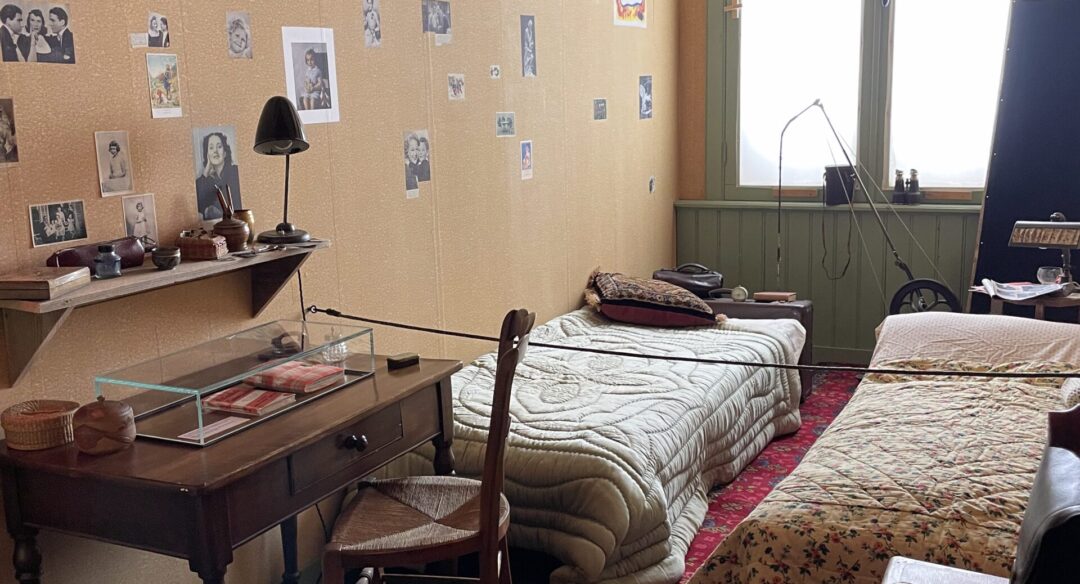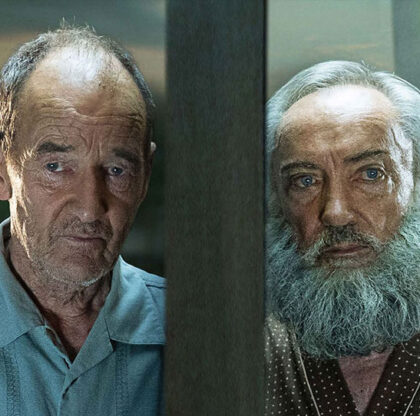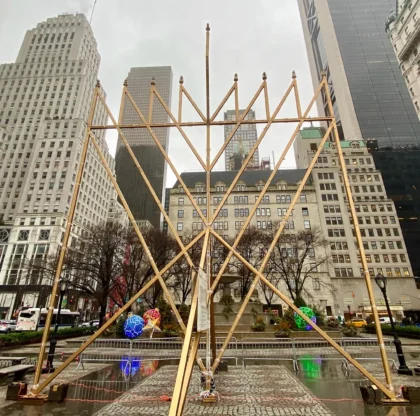Get the latest food, drinks and things to do news directly to your inbox. Subscribe Now
Walking through a near-identical reproduction of the Amsterdam annex where Anne Frank and her family, along with four other Jews, hid to escape Nazi capture during the Holocaust is an incredibly emotional experience—and one that every New Yorker should endure. The much-anticipated “Anne Frank: The Exhibition” will officially open at the Center for Jewish History, located at 15 West 16th Street by Fifth Avenue in downtown Manhattan, on January 27, International Holocaust Remembrance Day.
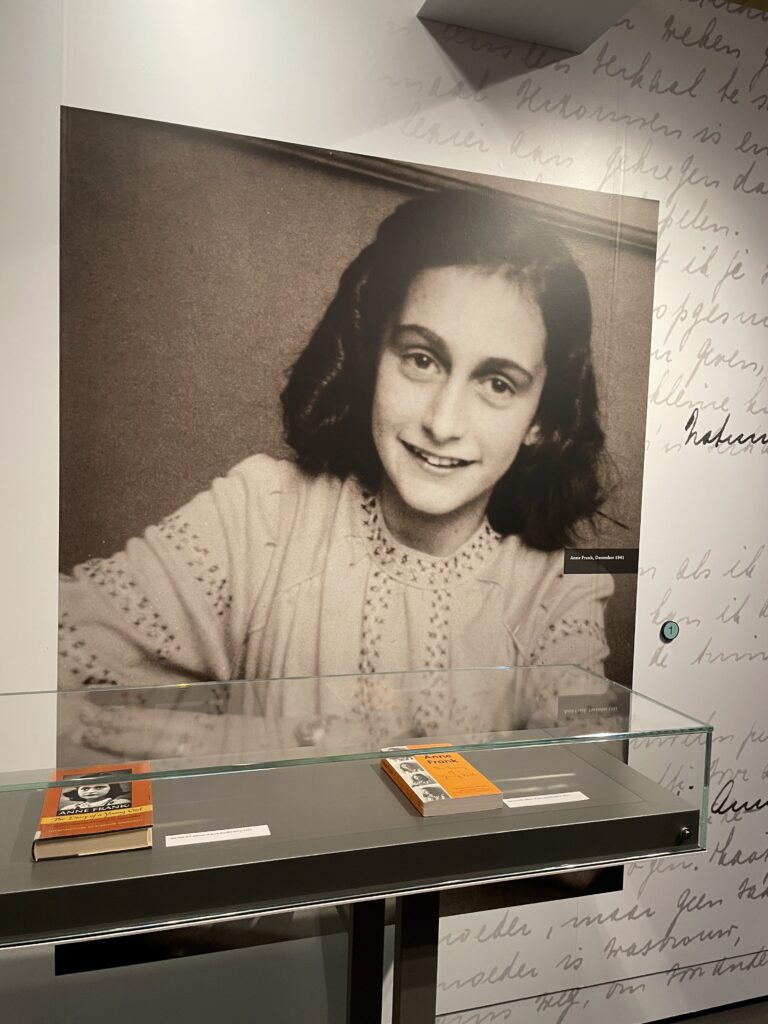
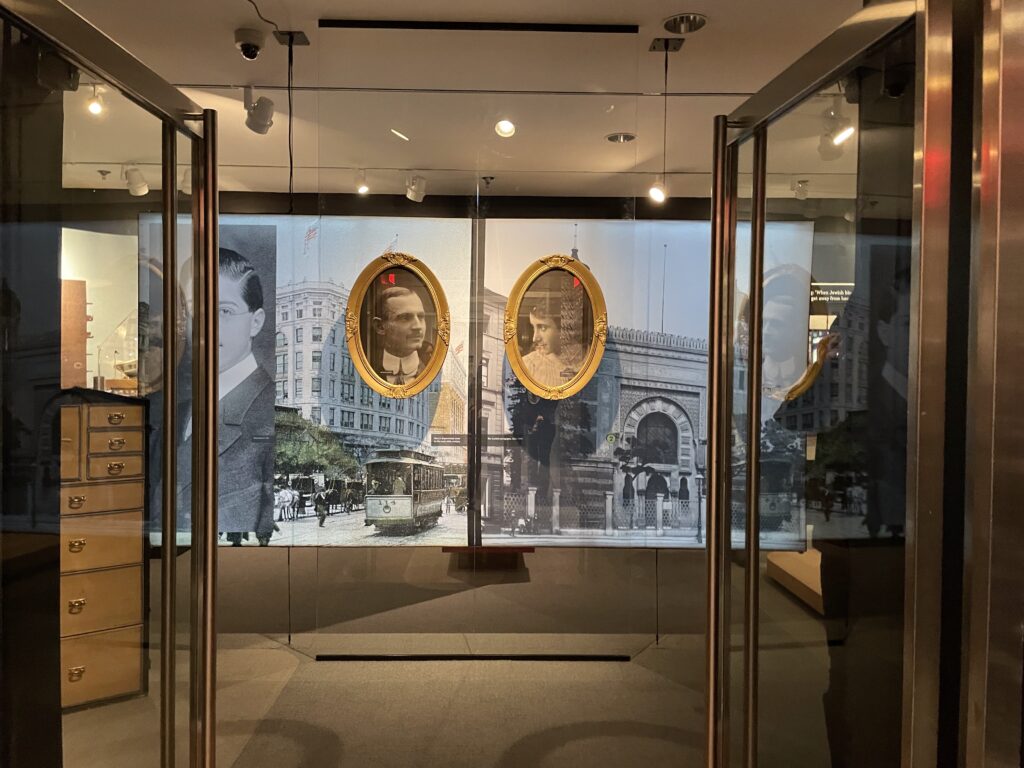
During a press preview this week, the mood was somber as visitors walked through the gallery space that led to the apartment’s reproduction, eerily reminiscent of the original Anne Frank House, a global tourist destination in the Netherlands.
The powerful exhibit begins with a section chronicling life in Frankfurt before 1929. Blown-up photos and black-and-white videos show that life seemed normal, with Jewish people integrated into society. Eventually, things changed, as chronicled by the quotes on the walls that reflect the rise of Nazism and the slow, systematic eradication of Jewish culture. Among the original artifacts on display is an SA dagger inscribed with the words “Alles für Deutschland” (“Everything for Germany”).
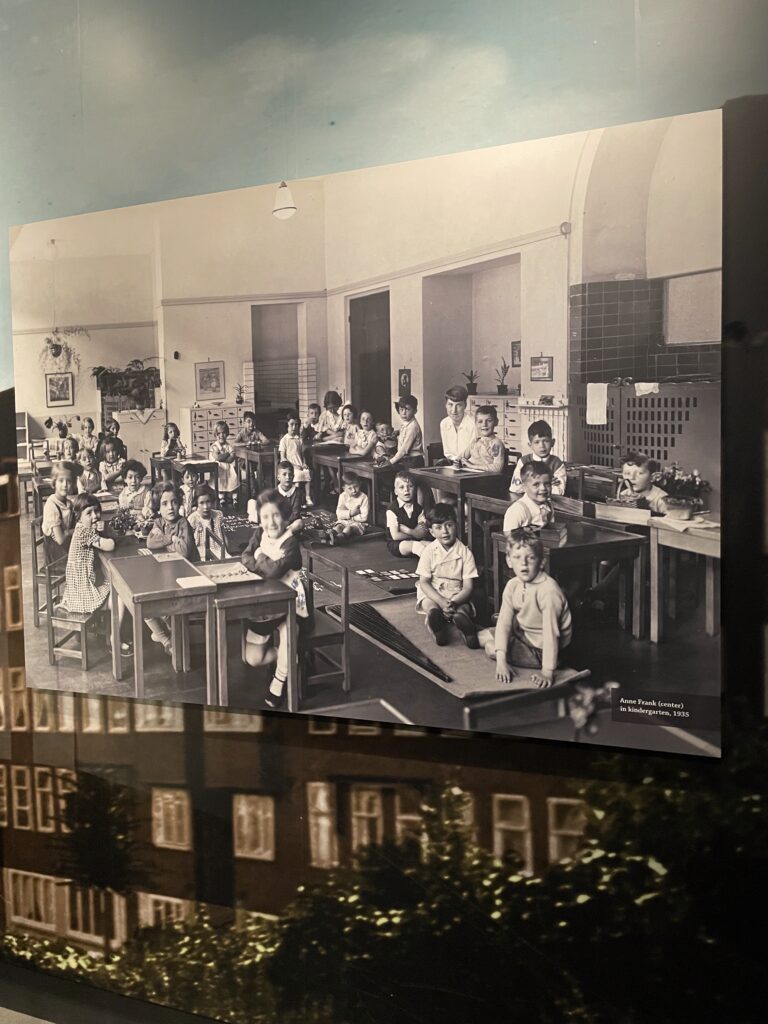
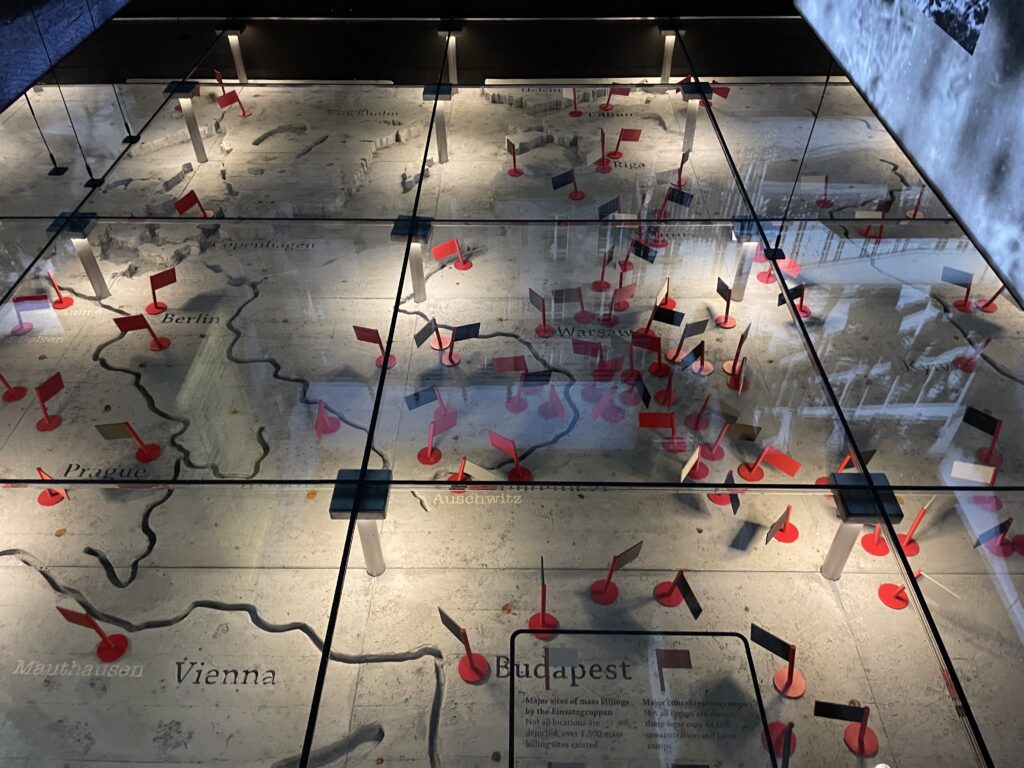
In a secondary room, a video plays on a loop, explaining how Jewish children were forced to attend separate schools, while Jewish-only banks were established, later becoming tools for robbery. Turn around, and you’ll face the stairs leading up to the annex.
For 25 months, the Frank family hid in a handful of cramped rooms, sharing space with four fellow Jews: Hermann van Pels, a Jewish businessman and friend of Anne’s father Otto; his wife, Auguste; and their teenage son, Peter. Fritz Pfeffer, a dentist and friend of the Frank family, joined the group at one point as well, sharing a room with Anne.
From notebooks to bathroom objects, posters, letters, photos and more, the rooms are recreated to resemble the original hideout, evoking a sense of desperation. How could anyone live like this for a day, let alone for over two years?
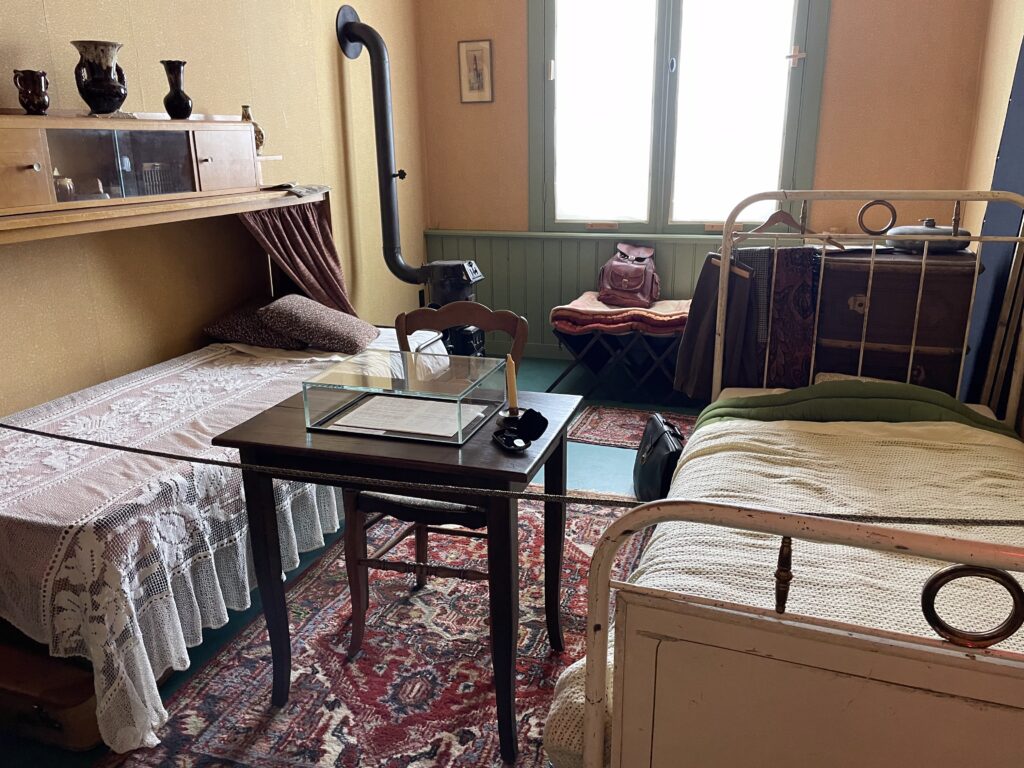
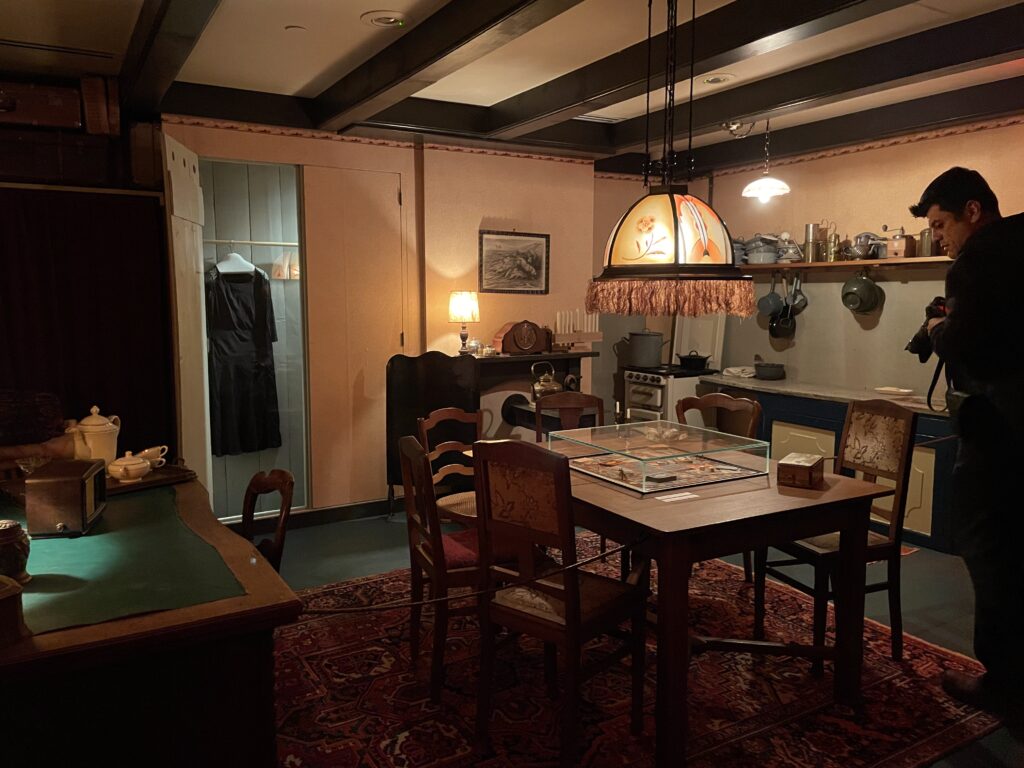
The experience inside the annex is further enriched by voiceovers describing the living conditions, the families’ moods and relationships, and excerpts from Anne’s diaries. The Diary of a Young Girl, published by her father (the only surviving member of the family) after the Holocaust, is a firsthand account of Anne’s life during the two years she spent in hiding. The diary was first published in the Netherlands in 1947, and the first English translation was released in 1952, titled The Diary of Anne Frank. Since then, it has been translated into over 70 languages and remains a seminal work about the Holocaust. The text is a core element of the exhibition, frequently referenced in both quotes and voiceovers.
Upon exiting the annex and learning about the Franks’ capture, visitors walk through another section of the exhibition: a labyrinth of sorts, peppered with photos from concentration camps. The floor of this section is particularly striking—a giant map with flags indicating the locations of the death camps, a stark “map of death.”
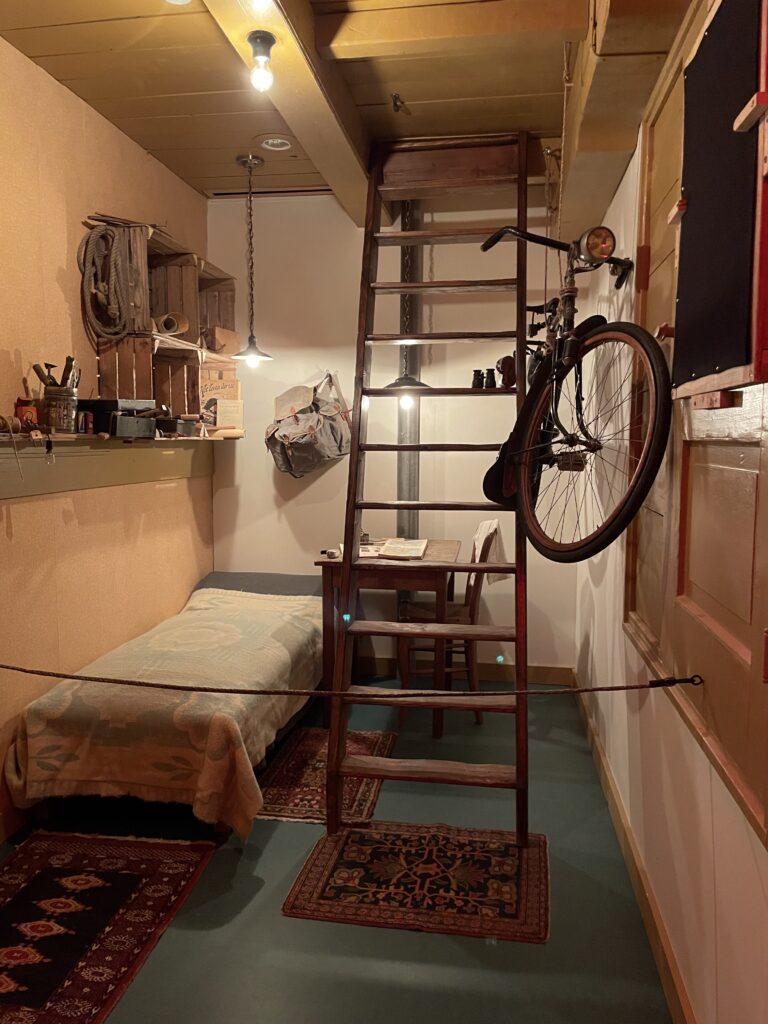

In addition to displaying numerous translations of the diary, along with posters from films and plays based on it, the final section of the exhibition features letters written by Otto Frank after the Holocaust, chronicling his discovery of his family’s fate. A final video shows Miep Gies, one of Otto’s former employees, recalling the moment she saw him after the war and learned of the deaths of Edith, Margot and Anne. She then takes out the diaries she had kept since the family’s capture and hands them to Otto.
“Anne Frank: The Exhibition,” on display through April, serves as a poignant reminder of the horrors of the Holocaust. The powerful exhibit may also prompt you to reflect on the rise of antisemitism in New York and beyond today, forcing you to consider what, exactly, the world—including you—has been doing to prevent something like the Holocaust from ever happening again. Perhaps visiting the show should be a New York requirement.
